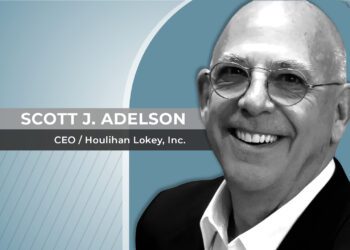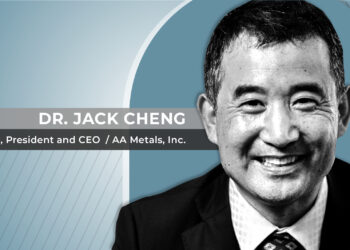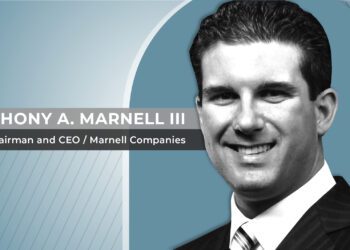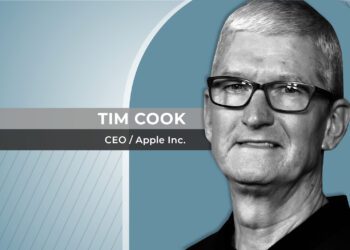HP and Chief Commercial Officer Christoph Schell are storming the new “Industry 4.0” with a deep company rethink towards arising leadership.
At the helm of the now faster-moving company’s American division, Christoph Schell and his team are always looking for ways to grow HP’s core computer and printing business while at the same time keeping an eye on potential developments in newer fields like 3D printing’s industrial applications, he adds.
The company, he explains, has a mandate to explore the depths of core, growth and potential markets in both North and South America. “The way we look at this from a strategy point of view is that we separate our business three ways: we have a Core which revolves around the printing and personal systems’ business that most people know us for.
In the Growth category —which is our second pillar— we have adjacent business where we see growth potential for HP such as graphics, where we go from analog to digital printing.” Then there’s the future, he says: “The future is all about immersive computing and 3D printing; and in 3D printing the objective is to move from an analog manufacturing environment— let’s call it injection molding— to a digital printing manufacturing environment.”
The printing business HP is globally known for, Schell says, is a solid source of information to draw parallels with the emerging 3D printing world, one of the linchpins of the incoming “Industry 4.0” manufacturing paradigm also involving advanced robotics and the internet of things (IoT).
Back in 2015, Hewlett Packard finished the process of the business split, and since then HP Inc. has felt like a much more agile company. Now the company is able to make faster investment and development decisions to help push forward its view of the future and the business, Schell comments.
“HP is now faster and more nimble, we are investing in ourselves and this is clearly working well for us and for our Core business,” as the company is no longer burdened by excessive bureaucracy. The company’s PC business has been growing at around 22% in the US in recent quarters. In the last reported calendar quarter “we were the only vendor growing. Actually, without that, the market would have not grown.”
Schell should know. He is responsible for the company’s financial and commercial performance in the Americas. Educated in Germany and France, he has made a living in electronics distribution since his start in a family-owned business and afterward as a veteran of nearly 20 years with HP.
One example of that approach is the 2016 announced acquisition of South Korean giant Samsung’s printing business, a transaction valued at over US$1 billion targeting the US$55 billion copier market; the largest ever M&A operation for HP’s printing business, Schell says. “We have good momentum and I think what we are doing in 3D printing is absolutely phenomenal. We are very proud of what we’ve been achieving here.”
Generational change of habits
The changes inside the company come at least partly because of what is happening in the outside world, as a younger generation takes command and asks their suppliers for new ways of doing business.
“We are facing new decision makers when it comes to purchasing decisions in the commercial enterprise base. These are more and more Millennials who do not necessarily like to own assets; they like to own services and access those services at a competitive rate. We have been doing this on print for quite some time (…) There’s an ongoing movement from analog to digital printing. As this movement happens there are pockets of growth that are really interesting for HP. I do believe that in the packaging environment there’s huge potential in North and South America,” the executive mentions. From a commercial point of view, he adds, “it is very sticky if you walk into a manufacturer and you own the packaging for them.”
HP’s commercial Indigo line of digital printers is one that’s going into the frontline as HP is prepared to become an outsourcing partner for companies in areas such as packaging, he adds.
Moving from a transactional engagement to a more services-led engagement requires moving around resources, extensive retraining of existing resources and also acquiring talent externally. For a company that obtains 87% of its revenue from channel partners, that also includes pooling resources with commercial partners and going after new ones to adapt them to HP’s operating ecosystem.
3-D industrial revolution
For company as attached to the printing environment as HP it only made sense to get involved in the no longer upcoming but present revolution of 3D printing-enabled manufacturing.
Additive manufacturing, as the systems are also known, are no longer just toys for the computer-literate or tools for prototyping in the industrial segment. Companies are actually starting to manufacture final goods with these, praised for their precision and for generating very little waste, and the Palo Alto company is more than ready for those new opportunities and looking for systems integrators to help smooth out the process.
“It is very interesting for us right now to work with system integrators that come from consulting efforts with enterprise customers, but also system integrators that are part of a manufacturing environment. That is important for graphics and also for 3D printing… I am spending a lot of my time right now pitching to these system integrators, with which HP honestly didn’t have any relationship with in the past (…) There are a lot of adjacent businesses in the industry that we are tapping into; robotics, for example, is one of them that is a key vertical for us from a go-to-market point of view, as we think about industry 4.0 and how to bring our graphics business and our 3D printing business into industry 4.0 setups,” he adds.
So what makes HP, a veteran of 23 years in the Fortune 500 list, different from its competitors?
“I think what does set us apart is that we have a very clear strategy okay. There are a lot of my competitors out there who are operating more by the flavor of the day. HP is not doing that, we have a clear strategy in the core and we have a clear strategy in the growth and the future setups.”
Proud to see @HP ranked No. 11 on The Wall Street Journal's "Best-Managed Companies of 2019", and among the "All-Stars" of the ranking #hpproud https://t.co/euRt4rpqgy
— Christoph Schell (@christophschel) November 27, 2019












